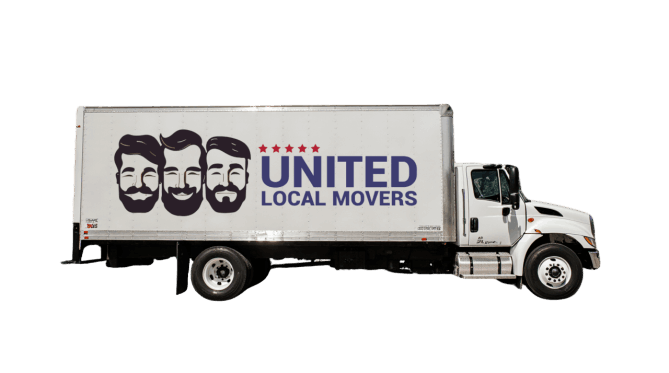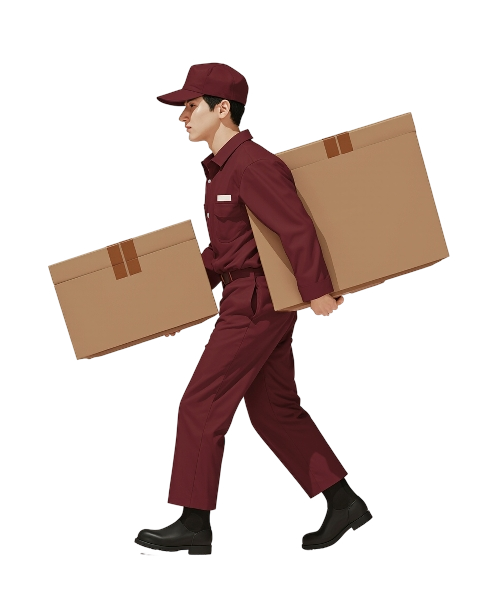Packing your entire home can feel overwhelming — but it doesn’t have to be. The key is breaking the process down into manageable steps with a clear room-by-room packing timeline. This approach saves time, reduces stress, and helps you stay organized throughout your relocation.
Whether you’re moving across town or across the country, following a structured packing schedule can make the process faster and more efficient.
Why a Room-by-Room Timeline Works
Many people make the mistake of packing randomly — a few boxes here, a few there — and end up overwhelmed days before moving day. A structured timeline:
- 📅 Spreads out the workload evenly
- 📦 Ensures you don’t forget anything
- 🧭 Keeps the home functional while you pack
- 🚚 Makes loading and unloading more organized
Professional movers like United Local Movers use similar strategies to keep big moves running smoothly.
Step 1: Start with Storage Spaces (6 Weeks Before Moving)
Storage spaces are the perfect starting point because they often contain non-essential items and can be packed early without disrupting your daily life. Begin with:
- 🏡 Garage
- 🧰 Basement
- 🪜 Attic
- 🧳 Closets and utility rooms
Sort items into categories: keep, donate, sell, or discard. Packing these areas early will make your home feel less cluttered and give you momentum for the rest of the process.
Step 2: Tackle Guest Rooms and Extra Bedrooms (5 Weeks Before Moving)
Guest rooms and rarely used spaces can be packed next. They’re typically low-priority living areas and are easy to box up without impacting your daily routine.
- 🛏️ Pack furniture you don’t use regularly
- 📦 Box extra linens and decor
- 📋 Label everything clearly by room
- 🧹 Give the room a quick clean after packing
These boxes can be stacked out of the way or moved into storage until moving day.
Step 3: Home Office and Library (4 Weeks Before Moving)
Home offices tend to accumulate paperwork, electronics, and books — all of which require careful packing. Start this room about a month before your move.
- 📚 Sort through documents and shred what you no longer need
- 🖥️ Disconnect and label cables for easy reassembly
- 📦 Use small boxes for books to avoid making them too heavy
- 🧰 Pack monitors, printers, and tech with padding
Make sure to keep essential work materials or laptops accessible if you’ll need them during the move.
Step 4: Dining Room and Living Room (3 Weeks Before Moving)
The living and dining areas contain furniture, decor, and entertainment electronics. Start packing non-essentials first, leaving everyday-use items for last.
- 🪑 Pack decorative items, pictures, books, and wall art
- 📺 Crate or securely pack electronics like TVs
- 🛋️ Disassemble furniture if possible
- 📦 Use protective blankets or wrap for delicate surfaces
This is also a good time to roll up and pack rugs.
Step 5: Bedrooms (2 Weeks Before Moving)
Bedrooms are more personal, so you’ll pack them closer to the move. Two weeks is usually enough to prepare without feeling rushed.
- 👕 Pack out-of-season clothing first
- 🧺 Use wardrobe boxes for hanging clothes
- 🛏️ Dismantle beds a few days before the move
- 📦 Keep a small suitcase for essentials
Make sure you clearly label clothing boxes so unpacking is smooth on the other end.
Step 6: Kitchen (1 Week Before Moving)
The kitchen is one of the most time-consuming rooms to pack because of the number of fragile items. Start early but keep essentials available.
- 🍽️ Pack rarely used dishes, pots, and appliances first
- 📦 Use dish packs and bubble wrap for glassware
- 🍳 Keep a minimal set of utensils for daily use
- 🧼 Empty the pantry gradually
Pro tip: label kitchen boxes by category (e.g., “pans,” “glassware,” “dry goods”) to make unpacking easier.
Step 7: Bathrooms (3–5 Days Before Moving)
Bathrooms don’t take long to pack, but they should be left until close to moving day since they’re used daily.
- 🧴 Pack extra toiletries, towels, and decor early
- 🧻 Keep daily hygiene items in a separate travel bag
- 🚿 Check expiration dates and discard old products
- 🧽 Wipe down shelves and cabinets as you empty them
Each bathroom box should be clearly labeled so it’s easy to unpack first thing after arrival.
Step 8: Essentials and Day-of Items (1–2 Days Before Moving)
In the final stretch, it’s time to prepare your personal essentials kit and last-minute boxes:
- 🧳 Pack clothes for the first few days after the move
- 🧼 Include toiletries, medications, and chargers
- 🍴 Keep disposable plates or minimal kitchenware
- 📋 Pack important documents separately
This is the bag or box that stays with you — not in the moving truck.
Step 9: Final Walkthrough (Moving Day)
On moving day, your goal isn’t to pack — it’s to double-check:
- 🚪 Check closets, cabinets, and drawers for forgotten items
- 📸 Take photos for move-out documentation
- 🔐 Lock windows and doors
- 📝 Review your inventory list with the movers
Clear communication with the moving crew ensures everything goes smoothly.
Step 10: Unpacking Timeline (After the Move)
Packing is only half the journey. A smart unpacking timeline can make settling in faster:
- 📦 Day 1–2: Essentials and bathrooms
- 🛏️ Day 3–5: Bedrooms and kitchen
- 🪑 Day 6–7: Living and dining rooms
- 🧰 Week 2+: Storage, decor, and non-essentials
Unpacking with structure helps you get comfortable quickly without burning out.
Step 11: Packing Tips from Professionals
Professional movers have strategies that make packing more efficient. Here are a few insider tips from United Local Movers:
- 🧭 Start early — more time equals less stress
- 📋 Label boxes clearly with both room and contents
- 🚛 Stack boxes by weight and size
- 🧳 Pack a “first night” box with essentials
- 🛡️ Protect fragile items with proper materials
These techniques save time during both packing and unpacking.
Step 12: A Stress-Free Packing Experience
Packing room by room with a timeline isn’t just about efficiency — it’s about peace of mind. You’ll stay organized, reduce stress, and make the entire moving experience smoother from start to finish.
With United Local Movers, your relocation becomes safer, faster, and stress-free — from the first box to the last room.





